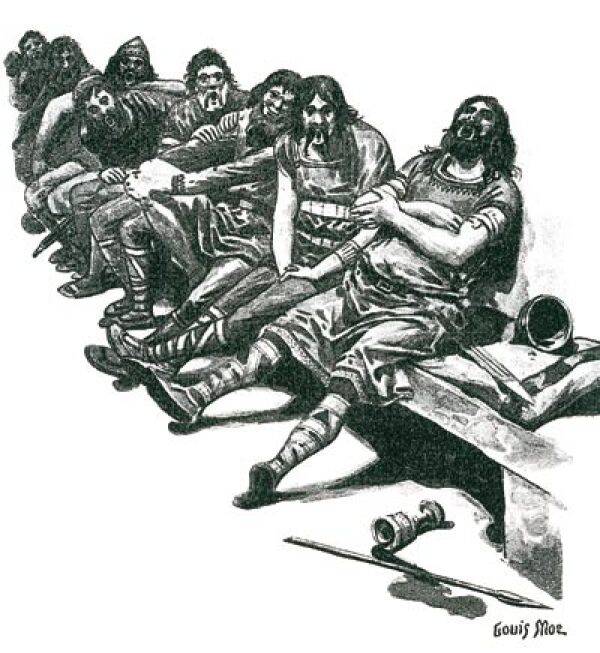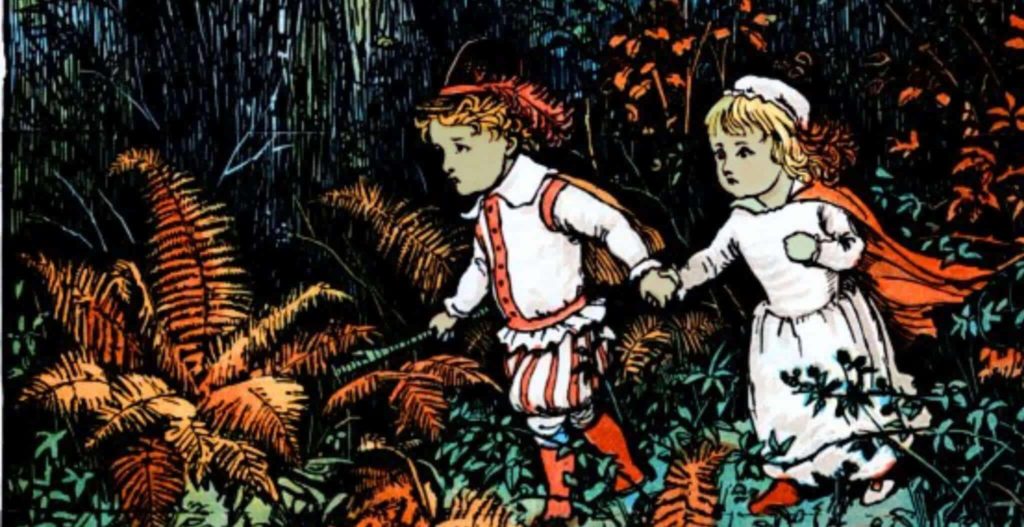Last updated on January 30th, 2023 at 01:29 am
When most people think of the Vikings, they think of fierce warriors who raided and pillaged their way across Europe. But what many people don’t know is that the Vikings were also a very sophisticated culture with a strong appreciation for drugs.
What drugs did they use? How were they used? Keep reading to find out.

Who Were the Vikings?
The Vikings were a group of people who originated from Scandinavia and lived during the Middle Ages. There are many theories on the origin of the word “Viking,” but it is clear that by the middle ages, it came to mean “pirate” or “raider.”
From 800 A.D. to the 11th century, many people left their homelands to seek fortunes over the water. They became a sea-faring people, mainly warriors, called “Northman” or Norsemen.
Once they established themselves as people of the sea, they would raid coastal cities and undefended monasteries, especially in the British Isles.
They would leave their mark during their raids, people calling them pirates, raiders, and even traders. The Vikings settled much of modern-day Britain and the European continent, extending into parts of Russia, Iceland, Greenland, and Newfoundland.
Vikings didn’t civilize themselves in the traditional sense and weren’t a Christian-based society. Nevertheless, historical records indicate that their warriors were capable of feats of strength and skill.
Where did this skill come from; was it a gift or something else?
Viking Culture and the Berserkers
The Vikings were a famously fierce and warlike people, but what was their culture like when they weren’t raiding and pillaging?
Like many other civilizations, they were structured similarly and included a caste system. At the top of their society were the nobles or local rulers (Jarls), then the thralls (or slaves), the Huskarls (the Jarl’s guard), and finally, the Karls (or freemen), which would have included fishermen, farmers, blacksmiths, etc.
The Vikings were also very religious people but believed in Paganism, and it was this genuine belief that made their soldiers so formidable and fearless.
They believed in Valhalla, a paradise-like afterlife reserved exclusively for fallen warriors. A special place in Valhalla was waiting for them if they died in battle.
Ancient texts said that the warriors would be weaker and almost ill after their raging ended for days afterward. War and fighting defined their culture, but not every Scandinavian warrior was worthy of being called a Berserker.
It was likely that these warriors were of a higher class; it is expected that the Jarls picked those warriors.
As we mentioned, the berserkers were full of rage and without care when going into battle, so much so that evidence suggested that they went into action without chest protection.
However, in Scandinavian texts, berserkers are referred to as “Ulfheddin,” meaning “warrior wearing wolf skin.” So, they may not have worn protective mail but likely wore wolf and bearskins.
Aside from that, these berserkers were known as crazed warriors who felt no pain and hacked through foes without remorse or hesitation. Since these warriors weren’t predominantly better or stronger than their counterparts, what gave them their strength and brutal nature?
The Mushroom Theory and The Henbane Theory
Scientists believe that once they ingested the mushrooms, the warriors would go into a trance-like state known as “berserkergang.”
Sources claim that the episode would start with tremors and chills followed by a flushed face and quick agitation that soon exploded into full-blown rage.
At this time, the warriors became resistant to fire and blade wounds and would howl like animals and bite the edges of their shields. A poet named Egil Skallagrimsson recalled these events in a book he wrote.
Scientists had previously speculated that the berserkers were likely consuming fly agaric mushrooms (Amanita muscaria) and panther cap (Amanita pantherina), which are hallucinogenic.
These mushrooms contain a psychoactive compound called Muscimol, which produces the “high.” The effects of the mushroom include intense colors, sounds, smells, and out-of-body experiences.
Generally, users would also experience Micropsy, which makes things less threatening and smaller than they appear, leading to a feeling of omnipotence.
This would explain the berserkers’ ability to feel no pain, lack of fear, and increased strength in battle. Unfortunately, these mushrooms are poisonous and can negatively affect subjects through vomiting, diarrhea, and twitching. In high doses, these mushrooms would be fatal.
However, another theory suggests the berserkers were consuming Henbane (Hyoscyamus niger), a poisonous plant with a yellow flower.
Researcher Karsten Fatur from the University of Ljubljana in Slovenia is an ethnobotanist who studies the relationship between humans and plants.
Fatur argues that based on his research into Norse texts, the effects of Henbane are very similar to the mushrooms with a swollen red face, chills and tremors, and a trance-like state.
This plant contains Hyoscyamine and Scopolamine, which are deliriants; henbane would inspire heightened aggression and unpredictability and reduce their sense of pain.
These work by blocking the acetylcholine receptors in the brain and causing a person to become delirious and confused. Fatur believes that it’s more likely the berserkers consumed Henbane as it’s found all over Scandinavia, whereas the mushrooms are not.
Furthermore, violent aggression isn’t a typical side-effect of the ingestion of fly agaric. In addition, the anesthetic effect of the plant may have also given the warriors the illusion of feeling no pain giving their opponents the impression of invincibility.
Also, chattering, twitching, and bizarre behaviors like shield biting are common symptoms of drug-induced anxiety.
Whatever the case may be, these elite warriors would have taken their obligations seriously; it stands to reason that they would be shock troops used to break up their opponent’s armies. Then, after the berserkers sent them scrambling, the main army could push into battle.
A Ritual Before Battle?
Since the berserkers were high members of the Viking society, it’s safe to assume that henbane would receive the same treatment. But, of course, such devotion isn’t offered lightly, and ingesting the plant in a ritual through smoking dried leaves or infusing the plant in a drink was possible during the Viking era.
Further support for this idea was found in Hobro of Denmark when archaeologists found several grave sites near the castle of Fyrkat.
Fyrkat is an old Viking settlement, but approximately 30 gravesites were found and exhumed. One of them belonged to a high-level priestess. This priestess was buried with essential items and a pouch containing henbane seeds. The priestess would likely have distributed these among the berserkers during a ritual.
While the Amanita Muscara is an interesting theory, it’s unlike that Vikings could use the substance due to the scarcity of the fungi. While they could grow themselves, it would be tough to do so due to their biology. Henbane is a more likely candidate as it’s quickly grown and is found all over Scandinavia.
It’s possible the berserkers used henbane in a ritualistic way before battle to help them achieve the famous invincible state.
While the Vikings aren’t the only ones known for using this rageful tactic, consider the Celts, Assyrians, or the Quachi from the Aztec warriors, they are by far the most notorious.

